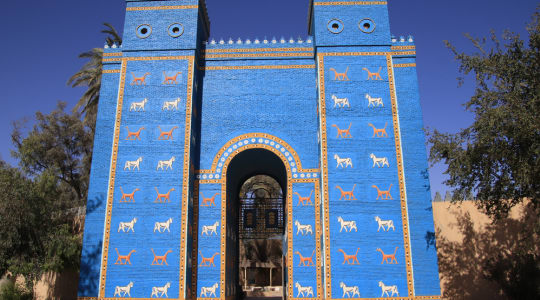
The Ishtar Gate is an ancient gate of the city of Babylon, located in modern-day Iraq. It was built during the reign of King Nebuchadnezzar II in the 6th century BC as one of the eight gates of the inner city of Babylon.
The Ishtar Gate was dedicated to the goddess Ishtar, the Babylonian goddess of love, war, and fertility. It was constructed using glazed blue bricks with alternating rows of bas-reliefs of dragons and bulls, which represented the gods Marduk and Adad respectively. The process of creating the glazed bricks involved the use of a high-temperature kiln, which was a remarkable feat of engineering for the time.
The gate was situated at the end of the Processional Way, a long and wide boulevard that led to the heart of the city. It was flanked by two towers and was decorated with many smaller gates and alcoves. The entrance was adorned with glazed tiles depicting images of Ishtar, lions, and aurochs.
In the 19th century, the German archaeologist Robert Koldewey led an excavation of the ancient city of Babylon and discovered the remains of the Ishtar Gate. Some of the bricks and tiles were taken to Berlin, where they were reconstructed in the Pergamon Museum.
Today, the Ishtar Gate is recognized as one of the most impressive examples of ancient Near Eastern architecture and art. It serves as a symbol of the cultural and artistic achievements of the Babylonian Empire.
Explore Near Ishtar Gate
Discover 2 attractions, 5 cities, and 1 airport within 75km. Perfect for planning day trips, finding connecting flights, or discovering new destinations to explore during your visit.
Nearby Attractions & Places to Visit
2 destinations within 37.1km - 61.7km from your location


Nearby Cities Worth Exploring
5 destinations within 8.9km - 38.9km from your location
Airports Near Ishtar Gate
1 destination within 61.6km from your location
Cross-Border Adventures Near Ishtar Gate
Discover cross-border adventures near Ishtar Gate. Explore neighboring countries with similar attractions and extend your travel experience across borders.





